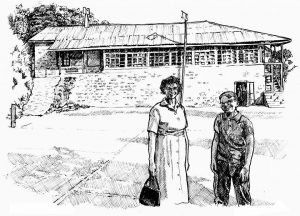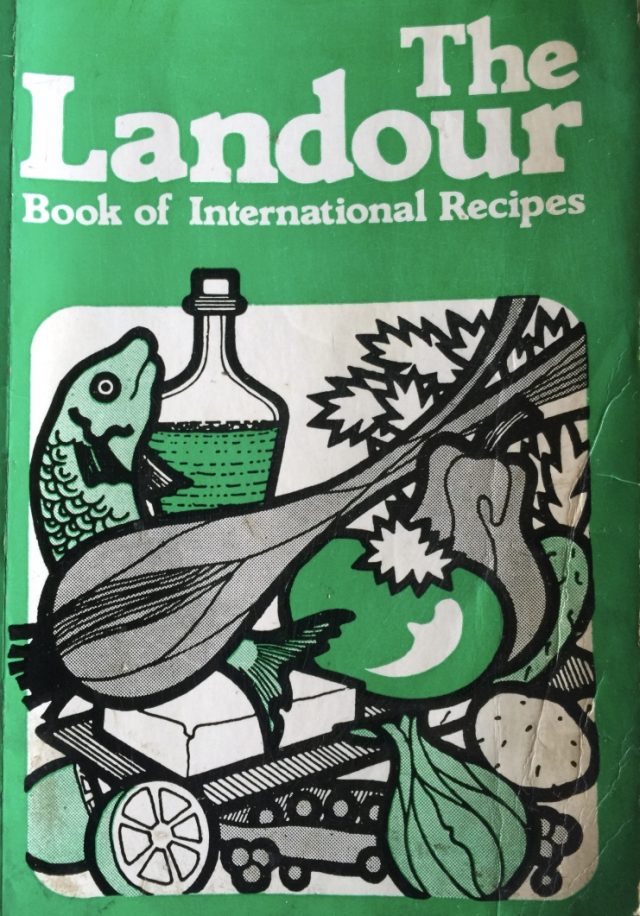 By Ganesh Saili
By Ganesh Saili
Occasionally, by chance, a hint of cinnamon, vanilla and nutmeg wafts through the air. It tries, but fails to overpower the all-pervading stink of burning brakes and the acrid fumes that continue to linger in the air as the vehicles go up and down our narrow lanes.
Dotting the hillside are Café Viola, Emily’s, Landour Lotte, Mudcup Café, Landour Bakehouse and the Northern Store Bakery. All their secret tips for baking at high altitudes come from a single book: the Landour Cookbook. It was first published by the Landour Community Centre in 1930, subsequently reprinted in 1938, and a third, spiral-bound, impression appeared in 1946.
Baking at 7,500 feet can be dicey: ‘To make a cake is gratifying to the one who is baking, especially if the elevation is an unusually high one. And baking a good cake requires skill.’
When, in the 1970s, the missionaries packed up to return home, the Landour Community Centre closed. The rickety building was demolished, and the land was incorporated into the nearby school.

Fifty years later, the cookbook entered the public domain. Authors and publishers vied with each other to make a quick killing, one and all, self-included! I, too, stole a few recipes, wrote a foreword, and put it all together with my name on the cover.
The 1930 edition – the original cookbook – ends with Julia Norton Clemes waxing lyrical over the foremost among household pests: the ubiquitous dishcloth or jharan:
Jharans for deghchis and jharans for shoes.
Jharans to pilfer and jharans to lose.
Jharans to bring home the sugar and meat,
Jharans to dust with and jharans to burn,
Jharans you know that will never return,
Jharans to wrap up the raisins and dal,
Jharans I fear that are used for ‘rumal’,
Jharans consume all the money you save,
Jharans are known to make sane people rave,
Jharans bring worry, and jharans bring strife
Jharans, I say, are the bane of my life.’

She also writes about the fact that we are slaves to keys, saying, ‘I started life in India as an ordinary missionary, shackled and chained to keys. Every time a jharan or a cup of milk was needed, out jangled my keys. My response was slow and stupid. I failed to recognise quickly a shallow notch from a deep notch, a square hole from a round one.’
So she started to slip the keys under the baby’s mattress – she was sure she did – and lo! They somehow popped up most mysteriously in her work basket. When she dropped them in a drawer, they found their way back to her pocket. Despairing, she appealed to the household for help, ‘Have you by any chance seen my keys?’
‘Oh yes! Madam, they are under your pillow.’
At least the keys had been tucked away in a safe place!
The bondage of keys makes her careen on like a locomotive out of control; it knows no end. ‘How can one clamp shackles on one’s wrist?’ she wonders.
Breaking the last thread of tradition, she resorts to the only option left: leaves everything unlocked.
What you see floating around are many severely edited imprints that make it to the bookshelves. It tells you, ‘For leavening with baking powder or soda at 6,500 feet, reduce from four tablespoons at sea level to one. Never reduce the sugar. Use the maximum amount of eggs and increase flour by one tablespoon for every increase of 1,500 feet.’
The book has household tips for the early missionaries who flocked to these hills to be with their school-going children. It lists the names of the many wedding anniversaries they might find themselves invited to:
‘The first year is a paper anniversary,
The second is Cotton,
The third is Leather,
The fifth is Wooden,
The seventh is Woollen,
The tenth year is Tin,
The twelfth is Silk & Linen.’
And there are bazaar cures aplenty, sprinkled over the last few pages. It tells you if you’re stung by a wasp to ‘suck the poison out of the wound and paint with tincture of iodine.’
It reassures you, ‘Pain will cease at once!’
Ganesh Saili, an author-photographer, has written and illustrated twenty books, some of which have been translated into over two dozen languages. He belongs to those select few who illustrate their writing. His work has found publication in periodicals, columns, and journals.








